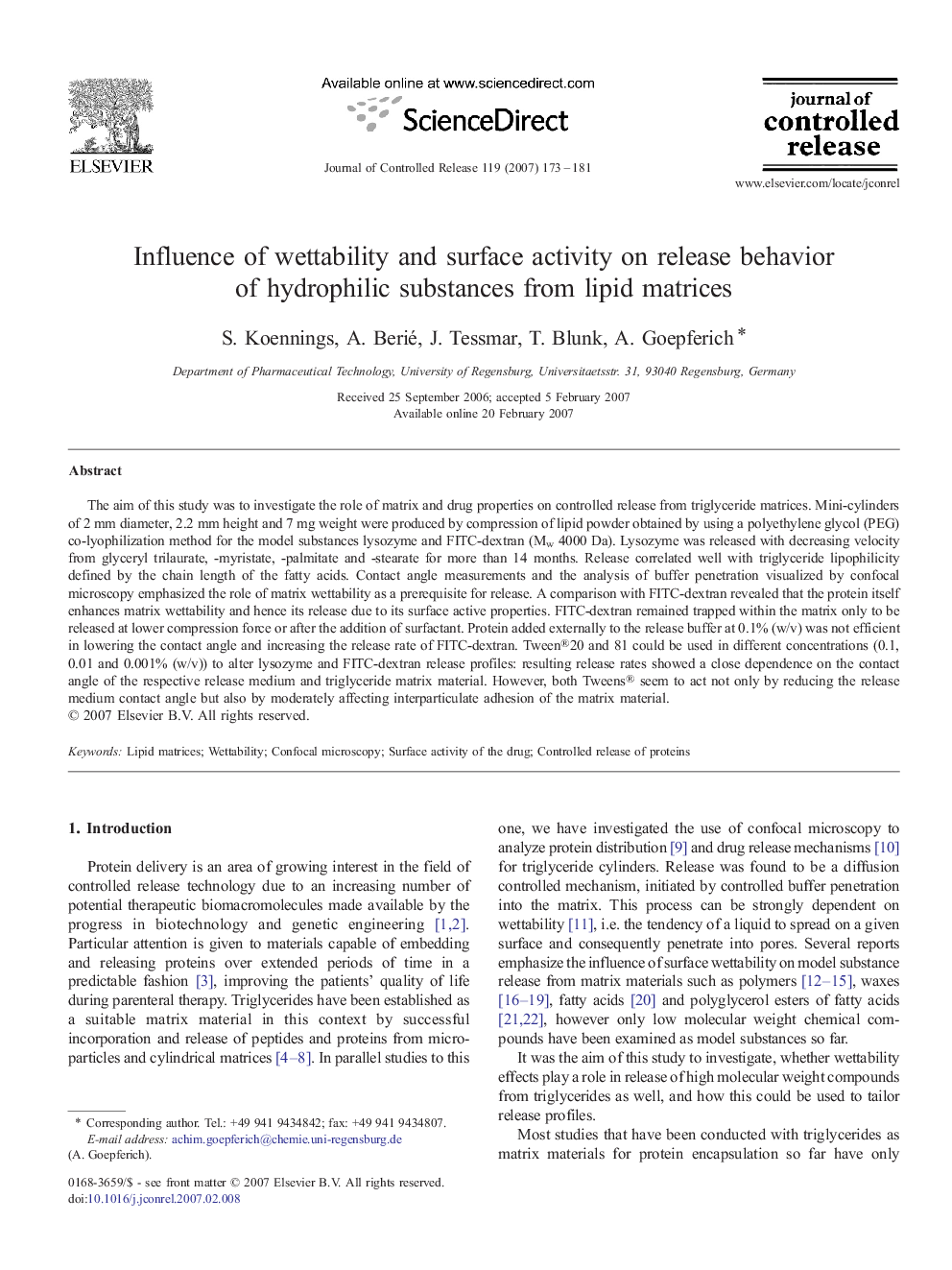| Article ID | Journal | Published Year | Pages | File Type |
|---|---|---|---|---|
| 1427009 | Journal of Controlled Release | 2007 | 9 Pages |
The aim of this study was to investigate the role of matrix and drug properties on controlled release from triglyceride matrices. Mini-cylinders of 2 mm diameter, 2.2 mm height and 7 mg weight were produced by compression of lipid powder obtained by using a polyethylene glycol (PEG) co-lyophilization method for the model substances lysozyme and FITC-dextran (Mw 4000 Da). Lysozyme was released with decreasing velocity from glyceryl trilaurate, -myristate, -palmitate and -stearate for more than 14 months. Release correlated well with triglyceride lipophilicity defined by the chain length of the fatty acids. Contact angle measurements and the analysis of buffer penetration visualized by confocal microscopy emphasized the role of matrix wettability as a prerequisite for release. A comparison with FITC-dextran revealed that the protein itself enhances matrix wettability and hence its release due to its surface active properties. FITC-dextran remained trapped within the matrix only to be released at lower compression force or after the addition of surfactant. Protein added externally to the release buffer at 0.1% (w/v) was not efficient in lowering the contact angle and increasing the release rate of FITC-dextran. Tween®20 and 81 could be used in different concentrations (0.1, 0.01 and 0.001% (w/v)) to alter lysozyme and FITC-dextran release profiles: resulting release rates showed a close dependence on the contact angle of the respective release medium and triglyceride matrix material. However, both Tweens® seem to act not only by reducing the release medium contact angle but also by moderately affecting interparticulate adhesion of the matrix material.
